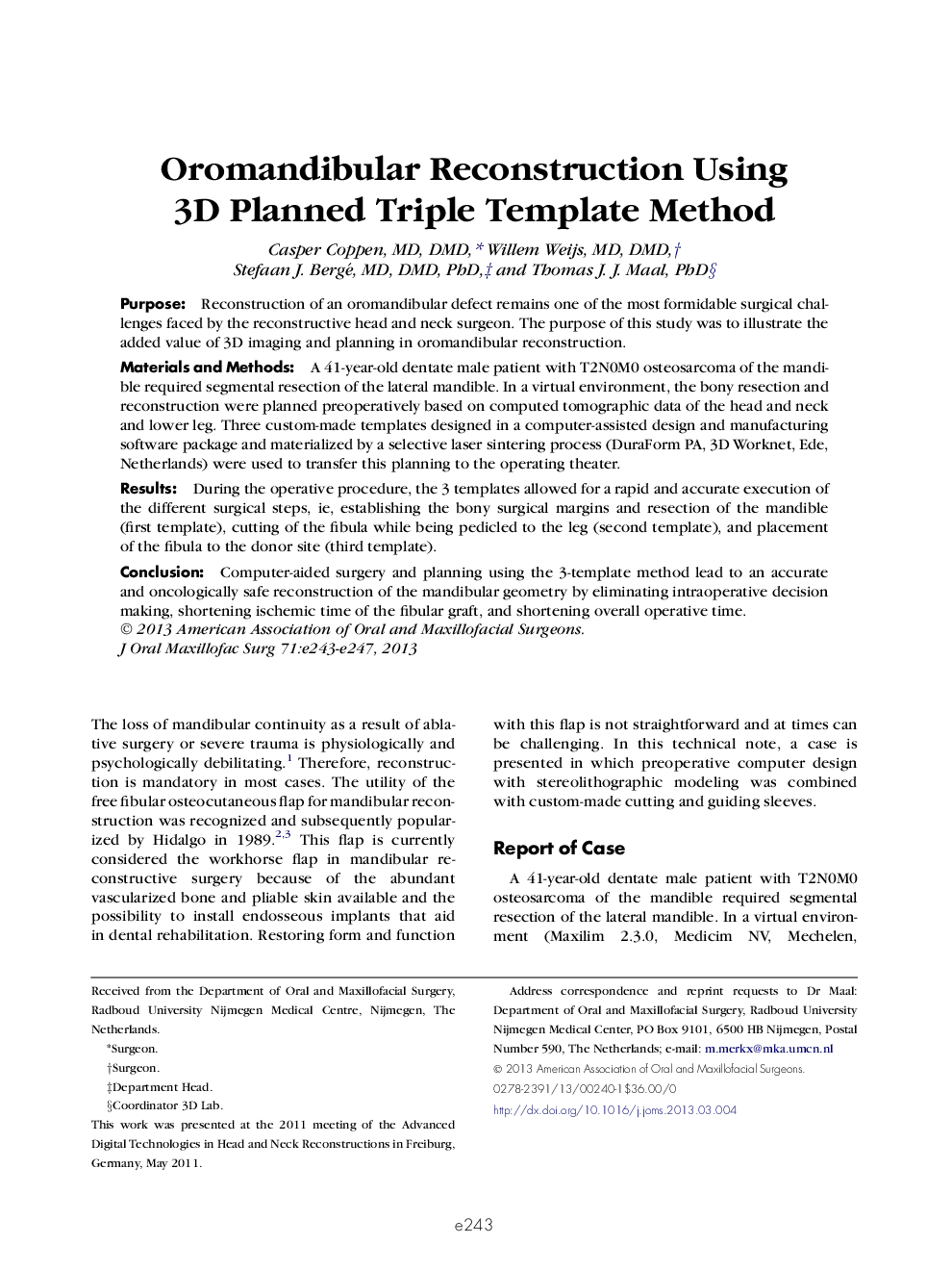| Article ID | Journal | Published Year | Pages | File Type |
|---|---|---|---|---|
| 3153258 | Journal of Oral and Maxillofacial Surgery | 2013 | 5 Pages |
PurposeReconstruction of an oromandibular defect remains one of the most formidable surgical challenges faced by the reconstructive head and neck surgeon. The purpose of this study was to illustrate the added value of 3D imaging and planning in oromandibular reconstruction.Materials and MethodsA 41-year-old dentate male patient with T2N0M0 osteosarcoma of the mandible required segmental resection of the lateral mandible. In a virtual environment, the bony resection and reconstruction were planned preoperatively based on computed tomographic data of the head and neck and lower leg. Three custom-made templates designed in a computer-assisted design and manufacturing software package and materialized by a selective laser sintering process (DuraForm PA, 3D Worknet, Ede, Netherlands) were used to transfer this planning to the operating theater.ResultsDuring the operative procedure, the 3 templates allowed for a rapid and accurate execution of the different surgical steps, ie, establishing the bony surgical margins and resection of the mandible (first template), cutting of the fibula while being pedicled to the leg (second template), and placement of the fibula to the donor site (third template).ConclusionComputer-aided surgery and planning using the 3-template method lead to an accurate and oncologically safe reconstruction of the mandibular geometry by eliminating intraoperative decision making, shortening ischemic time of the fibular graft, and shortening overall operative time.
